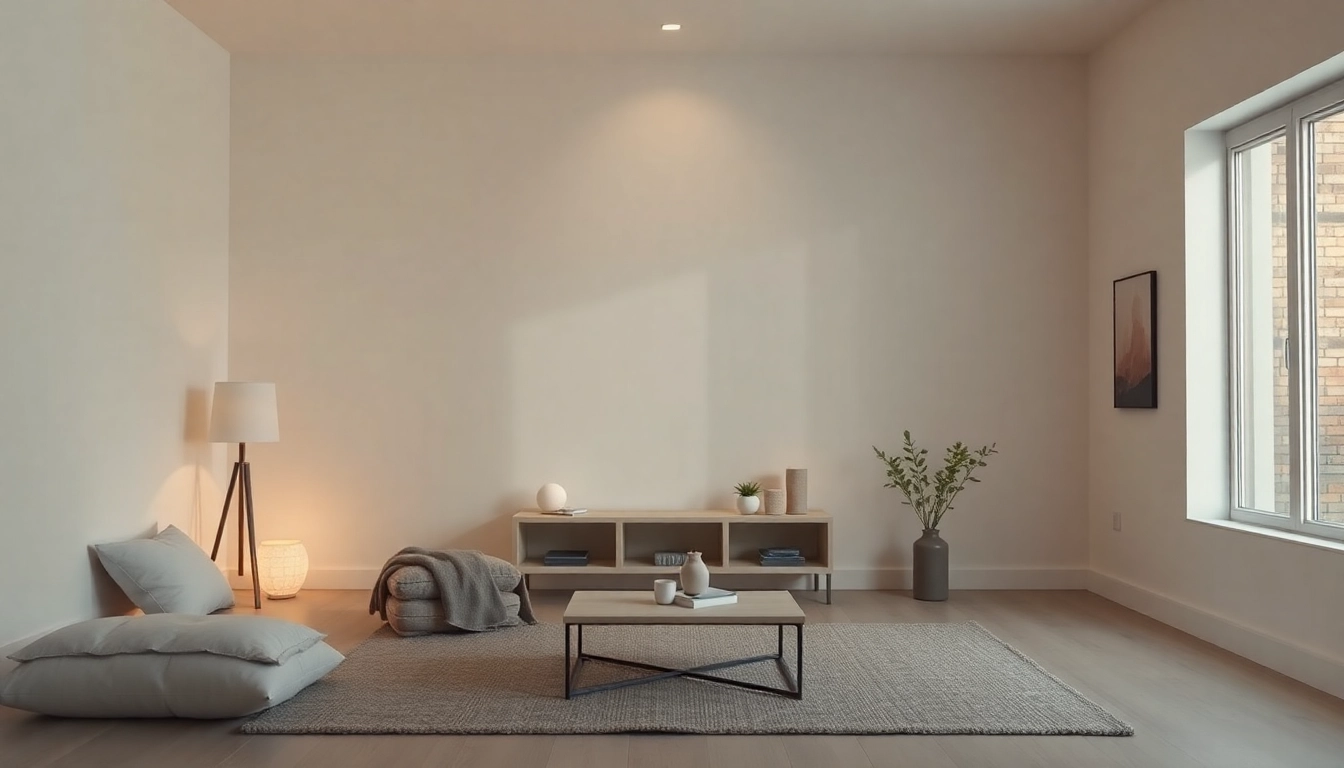Understanding Web Design Fundamentals
Defining Web Design and Its Importance
Web design refers to the process of creating and maintaining websites, encompassing both the aesthetic and functional aspects. In today’s digital-first world, having an online presence is vital for businesses, organizations, and individuals alike. A well-designed website not only attracts visitors but also engages them, facilitating conversions and brand loyalty. To achieve this, web design integrates several disciplines, from graphic design and user interface (UI) development to user experience (UX) and search engine optimization (SEO).
The importance of web design cannot be overstated. Not only does it influence how users perceive your brand, but it also affects usability and accessibility, which are crucial factors for retaining visitors. Poor web design can lead to high bounce rates, where users leave the site quickly, thereby diminishing the chances of conversion or engagement. Therefore, understanding the core elements and principles of web design is essential for anyone looking to establish a significant online presence.
Core Principles of Effective Design
Effective web design is centered around usability and aesthetic appeal. Here are some core principles to consider:
- Consistency: A consistent layout, color scheme, and font style throughout the website creates a cohesive experience that makes navigation intuitive.
- Hierarchy: Utilizing visual hierarchy through size, color, and spacing guides users naturally through your content, helping them to find what they need quickly.
- Accessibility: Designing with accessibility in mind ensures that your website is usable for people with disabilities. This includes using descriptive alt text for images and ensuring a keyboard-navigable layout.
- Imagery and Color: The strategic use of images and color can evoke emotional responses, enhancing user engagement and making the site more visually appealing.
- Feedback: Providing users with feedback during interactions—such as visual cues when buttons are pressed or elements are hovered over—enhances user satisfaction.
Types of Web Design Approaches
Web design approaches can vary widely, but some of the most common include:
- Static Web Design: Static websites consist of fixed content that doesn’t change unless manually updated. This approach is simple and cost-effective for small websites.
- Dynamic Web Design: Dynamic websites generate content based on user interactions or other variables. This approach is beneficial for sites that require frequent updates or personalized user experience.
- Responsive Web Design: Responsive design ensures that a website functions well on various devices, including mobile phones, tablets, and desktops. This has become increasingly important due to the growth of mobile internet usage.
- Adaptive Web Design: Adaptive web design creates multiple fixed layouts tailored for different devices, ensuring optimal functionality and user experience across platforms.
Key Elements of Successful Web Design
User Experience (UX) in Web Design
UX design focuses on optimizing the user’s experience on a website, ensuring that interactions are pleasant and intuitive. Creating a positive UX involves several steps:
- User Research: Understanding your target audience through surveys or interviews helps in tailoring the website to meet their needs.
- Wireframing: Developing wireframes allows designers to outline the layout and functionality without getting distracted by aesthetic elements.
- User Testing: Conducting usability tests with real users can uncover pain points and areas for improvement, leading to a more refined final product.
Visual Aesthetics and Color Theory
The visual design of a website plays a crucial role in visitor attraction and engagement. Applying color theory can significantly impact emotional responses:
- Color Psychology: Different colors evoke different feelings. For instance, blue often conveys trust, while red can evoke excitement or urgency. Choosing the right color scheme can reinforce your brand message.
- Typography: The choice of typography not only affects readability but also shapes the brand identity. A clear, legible font should complement the overall aesthetic.
Responsive Design for All Devices
With the proliferation of smartphones and tablets, responsive design has become essential. It allows a website to adjust to different screen sizes and orientations, ensuring optimal viewing experiences. Key components of responsive design include:
- Fluid Grids: Utilizing a grid system that scales fluidly with the dimensions of the screen helps maintain proportionality and layout integrity.
- Media Queries: Media queries in CSS enable developers to apply different styles based on device characteristics, such as width, height, and resolution.
- Flexible Images: Images should scale to fit within their containing elements while maintaining their aspect ratio, preventing distortion.
Best Practices for Web Design Development
Planning and Research for Your Project
Effective planning is crucial for successful web design. Steps in the planning phase include:
- Defining Your Goals: Clearly outline what you want the website to achieve, whether it’s increasing sales, improving brand awareness, or providing information.
- Identifying Target Audience: Understanding your audience will help tailor content and design to their preferences and behaviors.
- Competitor Analysis: Analyzing competitors can provide insights into industry benchmarks and discover gaps that you can exploit.
Utilizing Design Tools and Software
Modern web design often incorporates various tools and software for enhanced efficiency and creativity. Some of these include:
- Graphic Design Tools: Tools like Adobe XD, Sketch, or Figma allow designers to create high-fidelity prototypes and wireframes.
- Content Management Systems (CMS): Using a CMS like WordPress or Joomla can simplify website updates and management, especially for non-technical users.
- Analytics Tools: Implementing tools such as Google Analytics helps track user behavior, allowing for data-driven decisions to improve design and functionality.
Optimizing Content for Search Engines
SEO is a critical aspect of web design, as it directly affects a website’s visibility on search engines. Essential optimization techniques include:
- Keyword Research: Identifying relevant keywords and incorporating them naturally into your content helps improve search engine ranking.
- Meta Tags: Utilizing descriptive title and meta description tags ensures that search engines understand your page content while enticing users to click.
- Alt Text for Images: Providing alt text not only assists with accessibility but also helps search engines index your images properly.
Common Challenges in Web Design
Balancing Aesthetics and Functionality
One of the foremost challenges in web design is finding the right balance between aesthetics and functionality. While aesthetic design can attract visitors, a site must also be functional and user-friendly. To achieve this balance, consider the following:
- Prioritize usability over elaborate graphics. A site that is too busy can overwhelm users.
- Test design hypotheses to determine what works best for your audience through A/B testing.
Adapting to Emerging Trends and Technologies
The web design landscape is dynamic, with trends and technologies continuously evolving. Key strategies to adapt include:
- Stay informed about industry trends through webinars, blogs, and forums.
- Regularly review and update your website to implement new technologies, such as progressive web apps or voice search optimization.
Managing Client Expectations and Feedback
Working closely with clients presents unique challenges. Effective communication is key. Consider the following tips:
- Set clear expectations from the beginning regarding timelines, deliverables, and feedback processes.
- Incorporate feedback loops during the design process to ensure that clients feel involved while maintaining project integrity.
Measuring Success in Web Design Projects
Key Performance Indicators (KPIs) for Web Design
To measure the effectiveness of a web design project, it’s essential to define and track KPIs. Some crucial performance indicators include:
- Conversion Rate: This metric indicates the percentage of visitors who complete desired actions, such as signing up or making a purchase.
- Bounce Rate: A high bounce rate suggests visitors are leaving the site quickly, indicating potential usability issues.
- Average Session Duration: This metric reflects how long users spend on the site, providing insights into engagement levels.
Conducting User Testing and Assessments
User testing is a powerful method for gathering qualitative insights. Implementing this involves:
- Recruiting a diverse group of testers to reflect your target audience.
- Utilizing various testing methods, such as A/B tests, usability tests, and heatmaps, to gather comprehensive data.
Continual Improvement and Iteration Processes
Web design is not a one-and-done effort. To ensure long-term success:
- Regularly update and enhance your website based on user feedback and performance metrics.
- Adopt an agile approach to design, allowing for ongoing iterations and improvements based on changing needs and technologies.



